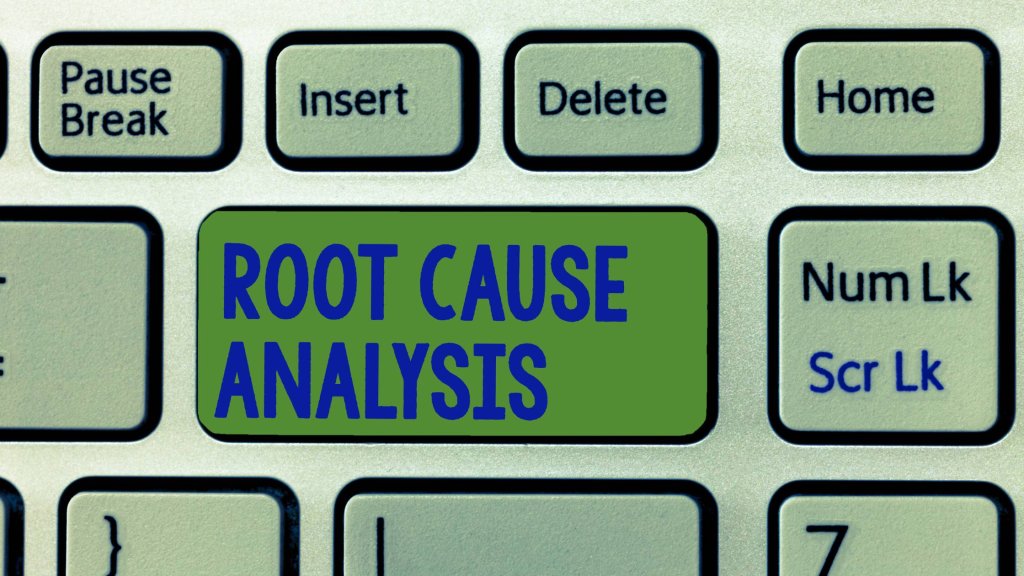VIEW BY TOPIC
- Finding Customers
- Business Systems
- Managing Employees
- Leadership
- Managing Money
Related Posts

Ready to Grow Your Business Fast?
Here’s How I Grew Five Businesses, and Eventually Sold One to a Fortune 500 Company.

How Does Root Cause Analysis Save Costs for Small Businesses?
When you are running a small business, identifying and addressing the root causes of problems is crucial for long-term success and cost-efficiency. Root Cause Analysis (RCA) is a systematic process used to identify the underlying reasons for issues, enabling business owners to implement effective solutions. This article delves into how root cause analysis can be a game-changer for small businesses, particularly in reducing costs and enhancing operational efficiency.
Understanding Root Cause Analysis
Root Cause Analysis is a methodical approach used to dissect complex problems, identify their core causes, and devise effective strategies to address them. Unlike superficial fixes that only treat symptoms, RCA digs deeper to find the underlying issues, ensuring that once a problem is solved, it doesn’t recur. This approach is not only about solving existing problems but also about preempting potential future issues.
The Process of RCA
- Identify the Problem: Clearly define the issue at hand.
- Collect Data: Gather relevant information and data about the problem.
- Analyze the Data: Look for patterns and correlations to identify potential causes.
- Identify Root Causes: Use tools like the 5 Whys or Fishbone Diagram to drill down to the core issues.
- Develop Solutions: Create targeted strategies to address these root causes.
- Implement and Monitor: Put solutions into action and monitor their effectiveness.
5 Cost-Saving Benefits of RCA for Small Businesses

1- Reduction in Recurring Problems
One of the primary benefits of RCA is its ability to reduce the recurrence of problems. By focusing on the root causes rather than just the symptoms, small businesses can implement long-term solutions. This approach minimizes the need for repeated repairs or adjustments, saving time and resources that would otherwise be spent on addressing the same issues repeatedly.
2- Improved Operational Efficiency
RCA helps in streamlining business processes by identifying and eliminating inefficiencies. By understanding the fundamental causes of delays, errors, or failures, businesses can make informed changes to their operations. This leads to smoother, more efficient processes, which in turn reduces operational costs and increases productivity.
3- Prevention of Costly Escalations
Small issues can quickly escalate into major problems if not addressed properly. RCA helps in nipping these issues in the bud, preventing them from growing into larger, more costly problems. This proactive approach saves businesses from incurring significant expenses that come with major repairs, overhauls, or damage control measures.
4- Enhanced Quality and Customer Satisfaction
By ensuring that products and services are delivered without flaws, RCA contributes to higher quality and customer satisfaction. This not only reduces the costs associated with returns, refunds, or customer complaints but also helps in building a loyal customer base. Satisfied customers are more likely to return and recommend your business, leading to increased revenue and reduced marketing costs.
5- Data-Driven Decision Making
RCA encourages a data-driven approach to problem-solving. By collecting and analyzing data to identify root causes, businesses can make more informed decisions. This reduces the likelihood of costly trial-and-error methods and ensures that resources are allocated effectively, leading to better financial management and cost savings.
Implementing RCA in Your Business
Implementing RCA into your business processes is a strategic move that can significantly enhance efficiency, streamline operations, and ultimately save costs. To successfully integrate RCA into your business framework, follow these essential steps:
Start with a Clear Definition:
Begin the RCA process by defining the problem you’re facing in specific and measurable terms. Clarity at this stage is crucial for an effective analysis. Ambiguity in problem definition can lead to misdirected efforts and ineffective solutions. Clearly articulate the issue, its scope, and its impact on various aspects of your business operations. This initial step lays the foundation for a thorough and focused investigation.
Use the Right Tools:
Selecting appropriate RCA tool is paramount to the success of your analysis. Several proven methodologies exist, and choosing the right one depends on the nature of the problem at hand. Consider utilizing tools such as the “5 Whys” technique to systematically dig deeper into the layers of causation, the Fishbone Diagram (Ishikawa) to visually map out potential causes, or Pareto Analysis to identify and prioritize the most significant factors.
Besides that, root cause analysis tools such as EasyRCA can help you streamline your root cause analysis processes and enables real time collaboration. Each tool brings a unique perspective to the analysis, ensuring a comprehensive examination of the root causes.
Focus on Solutions, Not Blame:
One of the key principles of effective RCA is to foster a culture that emphasizes solutions over blame. Encourage your team to view problems as opportunities for improvement rather than occasions for assigning fault. Creating an environment where identifying and solving problems is a collective and constructive process promotes innovation and continuous improvement. This approach not only facilitates more honest and open discussions but also motivates employees to actively contribute to the resolution of issues without fear of reprisal.
Monitor and Adjust:
After implementing solutions derived from the RCA process, the journey doesn’t end. Continuous monitoring of the effectiveness of these solutions is vital. Establish key performance indicators (KPIs) related to the identified problem areas and track them over time. Regularly assess whether the implemented changes have had the desired impact and be prepared to make adjustments if needed. This iterative approach ensures that your business remains agile and responsive to evolving challenges.
By following these steps, your business can harness the power of Root Cause Analysis to not only identify and address issues but also to proactively minimize costs and optimize overall efficiency. As you celebrate the one-year mark of implementing RCA in your business, reflect on the positive changes, and remain committed to the ongoing process of improvement and innovation.
Example of Root Cause Analysis for Small Businesses

Consider a small manufacturing business that consistently faces delays in its production schedule. To implement Root Cause Analysis (RCA) effectively, the following steps could be applied:
- Start with a Clear Definition:
- Problem: Production delays impacting delivery timelines.
- Clear Definition: Specify the delays in terms of hours or days, outlining the affected stages in the production process and the subsequent impact on customer satisfaction and revenue.
- Use the Right Tools:
- Utilize the Fishbone Diagram to visually map out potential causes, including factors like machinery issues, resource shortages, or communication breakdowns.
- Pareto Analysis can be employed to identify and prioritize the most significant contributors to production delays.
- Focus on Solutions, Not Blame:
- Foster a culture that encourages employees to view delays as opportunities for improvement.
- Emphasize collaborative problem-solving rather than assigning blame for the delays.
- Encourage team members to share insights and ideas for improvement without fear of reprisal.
- Monitor and Adjust:
- Implement solutions such as optimizing production schedules, improving maintenance protocols, or enhancing communication channels.
- Establish KPIs related to production timelines and regularly monitor their performance.
- Adjust strategies based on real-time feedback and continuous evaluation to ensure sustained improvements.
By applying these steps, the small manufacturing business can identify and address the root causes of production delays, leading to more efficient operations, reduced costs associated with overtime or rush orders, and enhanced customer satisfaction. Implementation of RCA would mark a period of consistent improvement and reinforce the commitment to a culture of continuous enhancement within the organization.
In Conclusion on Root Cause Analysis
Root Cause Analysis is not just a problem-solving tool; it’s a cost-saving strategy for small businesses. By focusing on the underlying causes of issues, businesses can avoid repetitive costs, enhance efficiency, and prevent the escalation of minor problems into major crises.
Implementing RCA requires a systematic approach, the right tools, and a mindset focused on solutions. By doing so, small businesses can achieve a more stable, efficient, and cost-effective operation.














